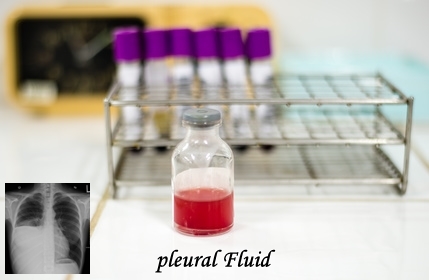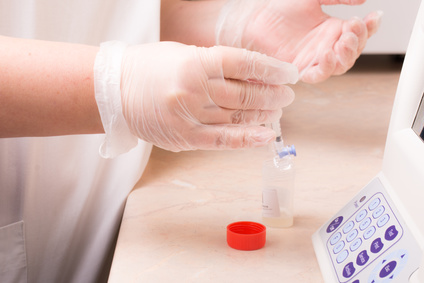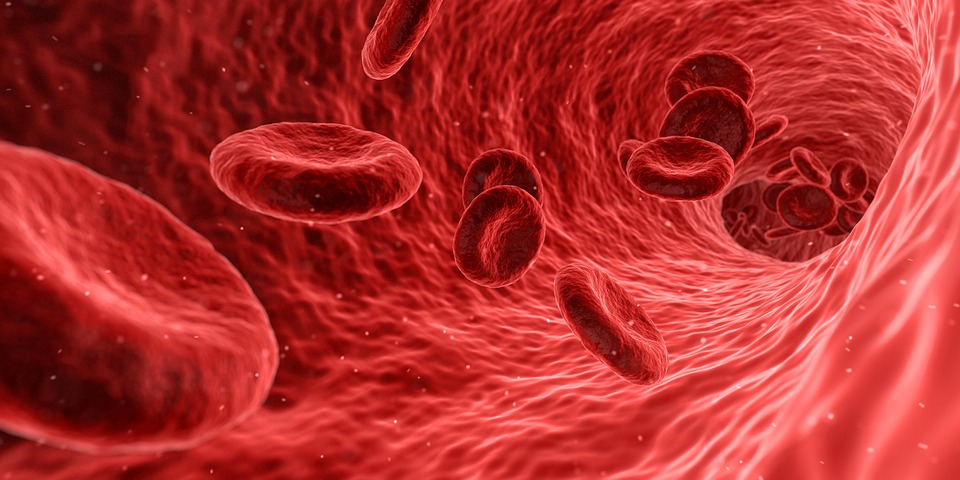Authors: Dr Vijay Shankar S, Dr Amita Kumari
| Transudate | Exudate | |
| Collection of fluid because of systemic disease where there is disturbance in regulation of fluid filteration and reabsorption | Fluid production due to direct involvement of peritoneal membranes | |
| Eg: Congestive heart failure, cirrhosis, nephritic syndrome | Eg: infections and malignancies | |
| Appeareance | Clear | Cloudy to turbid |
| Cellularity | Low | High |
| Proteins | Low | High |
| Clot | Does not clot | May clot |
| Specific gravity | Low | High |
| Albumin | Low | High |
| LDH levels | Less than 225U/L | Greater than 225U/L |
| Fluid to serum protein ratio | Less than 0.5 | Greater than 0.5 |
| Fluid to serum LDH | Less than 0.6 | Greater than 0.6 |
| Appearance /color | Disease associated |
| Clear or pale yellow | Normal |
| White/turbid | Infections |
| Bloody | Tuberculosis, malignancy, trauma |
| Milky white | Chylous effusion due to leak from thoracic duct |
| Brown/anchovy sauce | Rupture of amebic abscess |
| Black | Fungal infections as in aspergillosis |
The characteristic features are: triglyceride level greater than110mg/dl. On microscopy lymphocytes and fat droplets are seen. Fat droplets can be seen by staining with sudan III.
| Chylous | Pseudochylous | |
| Onset | Sudden | Gradual |
| Appearance | Milky white/yellow, bloody | Milky or greenish, metallic sheen |
| Microscopy | lymphocytosis | Mixed cellularity, cholesterol crystals present |
| Triglyceride level | Greater than 110mg/dl | Less than 50 mg/dl |
| Lipoprotein electrophoresis | Chylomicrons present | Chylomicrons absent |
Physical examination
Appearance
Color
Chemical examination
pH
Glucose
Protein
LDH
Adenosine deaminase
Amylase
Microbiologic examination
Gram stain
Acid fast Stain
Culture
Serologic examination( if required)
Antinuclear antibody (ANA)
Rheumatoid factor ( RF)
Tumor markers(in suspected malignancies)
Microscopic examination
For cell typing
To rule out malignancies
Pleural fluid pH below 7.2 indicates empyema which needs chest tube insertion and drainage (http://www.ncbi.nlm.nih.gov/pubmed/3307471 )
Pleural fluid below 6 – esophageal rupture
Pleural fluid greater than 7.4 – congestive cardiac failure
pH can help in differentiating tuberculous from malignant effusions. Recent Malignant effusions have higher pH.
| Type of cell | Diseases associated |
| Neutrophil | Bacterial pneumonia
Pulmonary infarction Pancreatitis Subphrenic abscess Early tuberculosis Transudate ( in around 10 %) |
| Lymphocytes | Tuberculosis
Viral infection Malignancies True chylothorax Rheumatoid pleuritis SLE Uremic effusion Transudate (approx 30%) |
| Eosinophils | Air in pleural space
Trauma Pulmonary infarction Congestive cardiac failure Parasitic or fungal infections Hypersensitivity reactions Drug reactions Rheumatologic desease Hodgkin disease
|
| RBC’s | Intrapleural malignancy ( 60% of cases)
Traumatic tap Pulmonary infarction Pleural infection Closed chest trauma Postmyocardial hepatic syndromes Hepatic cirrhosis |
| Immature blood cells | Chronic myeloid leukemia
Myeloid metaplasia( extramedullary hematopoiesis) |
a. Anaerobic infections
b. Urinothorax (urinous/ammonical odour)
a. Pancreatic disease
b. Esophageal rupture.
Giant multinucreated macrophages are seen in rheumatoid pleuritis. When they are in clumps, they can be mistaken for mesothelial cells or malignant cells.
| Tests | Diseases |
| Adenosine deaminase
Gamma interferon PCR |
Tuberculosis |
| Rheumatoid factor | Rheumatic effusion |
| Antinuclear antibodies | SLE |
| Amylase | Esophageal rupture
Pancreatitis |
| CEA | Adenocarcinoma lung |
| Tryglycerides | Chylothorax |
| D –dimer test | Pulmonary embolism |
.
The cells exfoliated into the pleural fluid can be studied by preparation of smears, liquid based cytology or cytospin preparations. Cell block study can also be done. The pitfall is that the absence of malignant cells DOES NOT rule out malignancy.
a. Cells can be in sheets, three dimensional clusters and in singles
b. Papillary or acinar structures
c. The nuclei show pleomorphism, coarse nuclei, irregular nuclear membranes, with prominent nucleoli
d. Multinucleation can be seen
e. Atypical mitosis and necrotic debris can be seen.
Three important factors should be considered before interpreting ADA levels
http://journal.publications.chestnet.org/article.aspx?articleid=1045663
http://bmcinfectdis.biomedcentral.com/articles/10.1186/1471-2334-13-546
a. Age: ADA level decreases with age
b. Pleural protein: ADA levels increases with increase in protein levels
c. The incidence of tuberculosis in that particular region: the cut off values are different in countries with different levels of incidence of tuberculosis.





